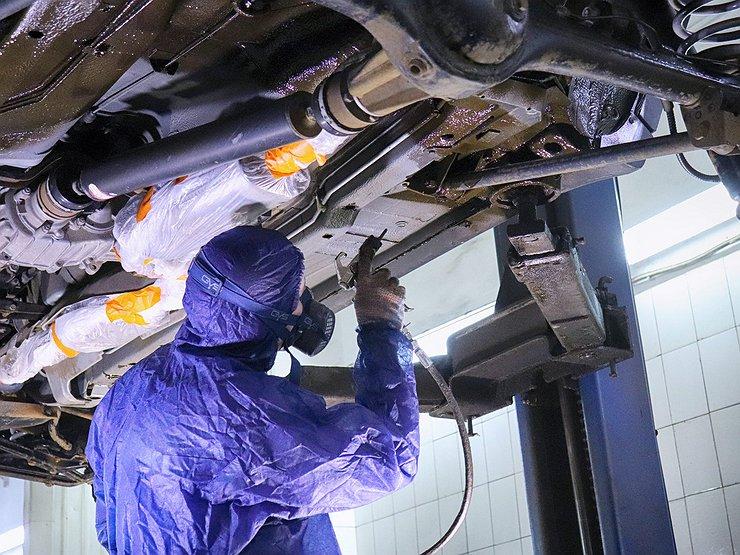
Why cars start to rust after anticorrosive treatment
Many owners of used cars come to the conclusion that for a long and happy operation of the car it would be nice to treat the “swallow” with anticorrosive. But the paradox is that such a procedure can do more harm to the car than help. How this happens - read the material of the portal "AvtoVzglyad".
In the view of the majority of motorists who have never personally encountered the technology of anti-corrosion treatment of a car, it seems quite simple: I drove the car onto a lift, and filled the bottom with anticorrosive - that's business! In fact, everything is not so simple.
First, the car body is thoroughly washed with special chemicals and a jet of water under pressure, then dried, and only then an anti-corrosion coating is applied to the bottom and into the internal cavities of the body, doors and frame (if we are talking about a frame car). The composition of anticorrosive can be different both in terms of the substances it contains and in consistency.
So, if it turns out that the car is being treated with anti-corrosion material, without making sure that it has dried out everywhere, or that dirt has remained somewhere, then it is quite likely that rust spots will subsequently appear. It will appear in those places where the anticorrosive laid down on a drop of water or an unwashed area. The so-called “under-film corrosion” will develop there - while the owner of the car is confident that he took care of the protection of the body. But even when everything is properly washed and dried, such problems are still likely.
Especially in the case of thick anti-corrosion compounds. About insufficient fluidity, they do not penetrate into the entire seams, cracks and the smallest depressions in the metal, but seal them. Thus, again, conditions are created for "under-film disgrace"

Or, for example, excessive - "from the heart" - the use of not very fluid material sometimes seals the drainage holes provided for the natural flow of water that has entered various cavities of the body. As a result, she accumulates there and does her rusty business, while the car owner does not suspect anything.
Speaking about the problems that anti-corrosion treatment sometimes brings to a car, one cannot fail to mention some more nuances. In particular, the fact that the coating can get where it should not: on the oxygen sensor in the exhaust system, suspension shock absorber rods, rubber pneumatic elements, CV joint covers. The same lambda probe must have access to the atmosphere. And when brake hoses are doused with anticorrosive, their rubber-like material absorbs it, swells and loses strength, which is fraught with breakage and leakage of “brakes”.
Against the backdrop of these truly dangerous consequences of anti-corrosion treatment, it is somehow not serious to talk about the stench in the cabin from drops of rust-protecting composition burning on the exhaust pipes. However, unpleasant odors are an almost inevitable consequence of the procedure for protecting a car from corrosion.
